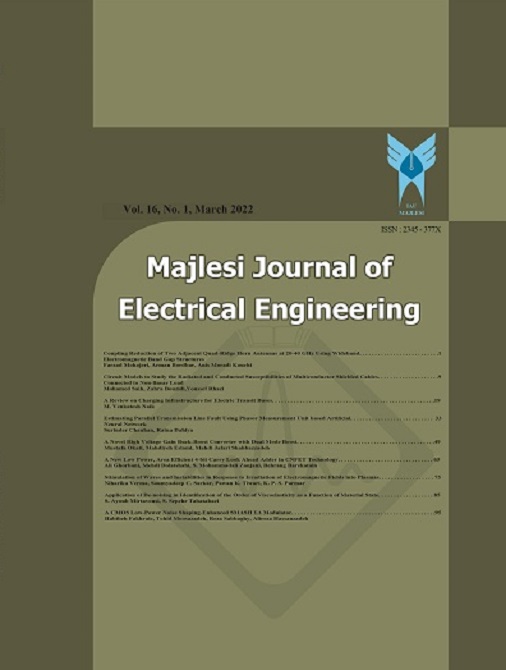[2] H. Ritchie, R.Pablo, and M.Roser.
"Energy Production & Changing Energy Sources.”.
Our World in Data, 2024.
https://ourworldindata.org/ . Accessed on: 1/07/2024
[3] E. Santoyo-Castelazo, and A. Azapagic,
"Sustainability assessment of energy systems: Integrating environmental, economic and social aspects.”.
Energy, Sustainability and Society, 11(1), 2024. DOI:
https://doi.org/10.1016/j.jclepro.2014.05.061
[5] D. Yergin. “The Prize: The Epic Quest for Oil, Money, and Power.”. Simon & Schuster, 2011.
[6] C. Freeman and F. Louçã. “As Time Goes By: From the Dynamics of Industrial Revolutions to the Transformation of the Global Economy.”. Oxford University Press, 2001.
[7] M.Z. Jacobson and M.A. Delucchi.
“Providing all global energy with wind, water, and solar power, Part I: Technologies, energy resources, quantities and areas of infrastructure, and materials.”. Energy policy, 39(3): 1154-1169,2011. DOI:
https://doi.org/10.1016/j.enpol.2010.11.040.
[11] N.R.E. Laboratory. “Energy Efficiency and Renewable Energy.”.2024.
https://www.nrel.gov/ Accessed on: 1/07/2024.
[14] U.S.E.I. Administration. “Renewable Portfolio Standards.”. 2024.https://www.eia.gov/energyexplained/renewable-sources/portfolio-standards.php. Accessed on: 1/06/2024.
[16] W. E Forum.
“Renewable Energy Innovations: Climate Emergency.”. 2023.
https://www.weforum.org. Accessed on: 1/06/2024.
[17] O. Abdul-Rahman. “Most Innovative Technologies in Renewable Energy.”.2024.
[22] C. Magazzino, M. Mele, N. Schneider, and G. Vallet,
"The relationship between nuclear energy consumption and economic growth: evidence from Switzerland," Environmental Research Letters, 15(9):1-10,2020.DOI:
https://doi.org/10.1088/1748-9326/abadcd.
[23] C. Magazzino, M. Mele, C. Drago, S. Kus¸kaya, C. Pozzi, and U. Monarca. “The trilemma among CO2 emissions, energy use, and economic growth in Russia.”. Scientific Reports, 13(1):1–18, 2023. DOI: https://doi.org/10.1038/s41598-023-37251-5.
[24] C. Magazzino and N. Schneider. “The causal relationship between primary energy consumption and economic growth in Israel: a multivariate approach.”. International Review of Environmental and Resource Economics, 14(4):417–491, 2020. DOI:
https://doi.org/10.1561/101.00000121.
[25] A. A. Rafindadi. “Revisiting the concept of environmental Kuznets curve in period of energy disaster and deteriorating income: Empirical evidence from Japan.”. Energy Policy, 94:274–284, 2016. DOI:
https://doi.org/10.1016/j.enpol.2016.03.040.
[26] A. A. Rafindadi and O. Usman. “Globalization, energy use, and environmental degradation in South Africa: startling empirical evidence from the Maki-cointegration test.”. Journal of environ- mental management, 244:265–275, 2019. DOI:
https://doi.org/10.1016/j.jenvman.2019.05.048.
[27] A. A. Rafindadi. “Could the expanding economic growth and trade openness of the United Kingdom pose a threat to its existing energy predicaments.”. International Journal of Energy economics and policy, 5(1):121–137, 2015.
[28] A. A. Rafindadi and I. Ozturk. “Dynamic effects of financial development, trade openness and economic growth on energy consumption: evidence from South Africa.”. International Journal of Energy Economics and Policy, 7(3):74–85, 2017.
[29] A. A. Rafindadi. “Econometric prediction on the effects of financial development and trade openness on the German energy consumption: a startling revelation from the data set.”. Inter- national Journal of Energy economics and policy, 5(1):182–196, 2015.
[30] A. A. Rafindadi and A. S. Mika’Ilu. “Sustainable energy consumption and capital formation: Empirical evidence from the developed financial market of the United Kingdom.”. Sustainable Energy Technologies and Assessments, 35:265–277, 2019. DOI:
https://doi.org/10.1016/j.seta.2019.07.007.
[34] D. Gielen, F. Boshell, D. Saygin, M. D. Bazilian, N. Wagner, and R. Gorini. “The role of renewable energy in the global energy transformation.”. Energy Strategy Reviews, 24:38–50, 2019.DOI:
https://doi.org/10.1016/j.esr.2019.01.006.
[35] W. E. Forum. “Russia-Ukraine Invasion: Global Energy Crisis.”.2024. https://www.weforum.org/stories/2022/11/russia-ukraine-invasion-global-energy-crisis/. Accessed on: 1/07/2024.
[36] G. Zabel and E. Economics. “Peak people: the interrelationship between population growth and energy resources.”. Energy Bulletin, 20:1–59, 2009.
[37] T. Moss and J. Kincer. “How does energy impact economic growth?”. 2023. https://energyforgrowth.org/article/how-does-energy-impact-economic-growth-an-overview-of-the-evidence/. Accessed on: 1/07/2024.
[38] F. Danielle. “HowStuffWorks. How does population growth affect energy use?”. 2024. https://science.howstuffworks.com/environmental/energy/population-growth-affect-energy.htm. Accessed on: 1/07/2024.
[39] U. S. D. O. “Energy Efficiency Technologies.”. 2024. https://www.energy.gov/eere/office-energy-efficiency-and-renewable-energy. Accessed on: 1/07/2024.
[40] I. E. Agency. “Rapid Progress of Key Clean Energy Technologies.”. 2024. https://www.iea.org/news/rapid-progress-of-key-clean-energy-technologies-shows-the-new energy-economy-is-emerging-faster-than-many-think. Accessed on: 1/07/2024.
[41] IEA. “World Energy Outlook 2022.”. IEA, 2022. https://www.iea.org/reports/world-energy-outlook-2022. Accessed on: 1/07/2024.
[42] IEA. “World Energy Outlook 2023.”. 2024. https://iea.blob.core.windows.net/assets/ed1e4c42-5726-4269-b801-97b3d32e117c/WorldEnergyOutlook2023.pdf. Accessed on: 1/07/2024.
[44] B. Liddle and G. Casey. “Population and Energy Consumption/- Carbon Emissions: What We Know, What We Should Focus on Next.”. International Handbook of Population and Environment, pages 421–438, 2022.
[45] R. Bardazzi and M. G. Pazienza. “Demographic shifts, household energy needs and vulnerability.”. Vulnerable Households in the Energy Transition: Energy Poverty, Demographics and Policies, pages 29–55, 2023. DOI:
https://doi.org/10.1007/978-3-031-35684-1.
[46] IEA. “India Energy Outlook 2021.”. https://www.iea.org/reports/india energy-outlook-2021. Accessed on: 1/07/2024.
[47] D. Zhou, X. Gu, and H. Ding. “Impact of Demographic Transition on Household Energy Consumption: A Case from China.”. Energy Engineering, 118(4):961–979, 2021.
[48] D. Doris. “Statista. Energy Sector in Nigeria.”. 2024. https://www.statista.com/topics/11022/energy- sector-in-nigeria/#topicOverview. Accessed on: 1/07/2024.
[49] IEA. “Africa Energy Outlook 2019, IEA, Paris.”. https://www.iea.org/reports/africa-energy-outlook-2019. Accessed on: 1/07/2024.
[50] IEA. “Africa Energy Outlook 2022, IEA, Paris.”. https://www.iea.org/reports/africa-energy-outlook-2022. Accessed on: 1/07/2024.
[51] IEA. “SDG7: Data and Projections, IEA, Paris.”. https://www.iea.org/reports/sdg7-data-and-projections. Accessed on: 1/07/2024.
[52] IEA. “Key World Energy Statistics 2021, IEA, Paris.”. https://www.iea.org/reports/key-world-energy-statistics-2021. Accessed on: 1/07/2024.
[53] IEA. “Germany 2020, IEA, Paris.”. https://www.iea.org/reports/germany-2020. Accessed on: 1/07/2024.
[54] U. N. I. D. Organization. “Industrial Energy Efficiency.”. https://www.unido.org/our-focus-safeguarding-environment-clean-energy-access-productive-use/industrial-energy-efficiency-and-climate-change. Accessed on: 1/07/2024.
[55] E. Commission. “Renewable Energy Targets.”. 2024. https://energy.ec.europa.eu/topics/renewable-energy/renewable-energy-directive-targets-and-rules/renewable-energy-targets_en. Accessed on: 1/07/2024.
[56] Y. Zhao and S. Wang. “The relationship between urbanization, economic growth and energy consumption in China: an econometric perspective analysis.”. Sustainability, 7(5):5609–5627, 2015. DOI: https://doi.org/10.3390/su7055609.
[57] UN-Habitat. “Urban Energy.”. https://unhabitat.org/topic/urban-energy. Accessed on: 1/07/2024.
[58] W. E. Forum. “Global Urbanization and Material Consumption.”. https://www.weforum.org/stories/2022/04/global-urbanization-material-consumption/. Accessed on :1/07/2024.
[59] J. Zhu, Z. Huang, Z. Li, and K. Albitar. “The impact of urbanization on energy intensity-an empirical study on OECD countries.”. Green Finance, 3(4):508–526, 2021. DOI: https://doi.org/10.3934/GF.2021024.
[60] A. A. Warsame. “The impact of urbanization on energy demand: an empirical evidence from Somalia.”. International Journal of Energy Economics and Policy, 12(1):383–389, 2022. DOI: https://doi.org/10.32479/ijeep.11823.
[61] IEA. “Global Energy and Climate Model, IEA, Paris.”. 2024. https://www.iea.org/reports/global-energy-and-climate-model. Accessed on: 1/07/2024.
[62] M. Company. “How grid operators can integrate the coming wave of renewable energy.”. 2024. https://www.irena.org//media/Files/IRENA/Agency/Publication/2024/Nov/IRENA_World_energy_transitions_outlook_2024.pdf. Accessed on: 1/07/2024.
[63] O. W. K. Avellino, F. Mwarania, A.-H. A. Wahab, K. T. Aime, and K. Aime. “Uganda solar energy utilization: current status and future trends.”. International Journal of Scientific and Research Publications (IJSRP), 8(3):317–327, 2018. DOI: https://doi.org/10.29322/IJSRP.8.3.2018.p7547.

